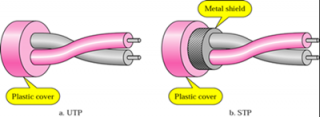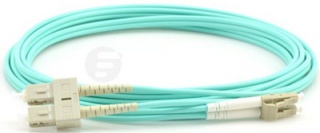Marketing
Comparison Among Twisted Pair, Co-axial Cable and Fiber Optics
In communication systems, massive bundles of wires and cables are used to transport data between servers and other equipment. These cables can be twisted pair cables, co-axial cables and fiber optic cables. Since all these three types can be applied to network communications, itís essential to determine which cable type is the best for the reliable and efficient data transfer, meaning that a basic understanding of their respective designs and features is necessary. This text aims to compare these three kinds and discuss the differences among them.
Twisted Pair Cable
Twisted pair cable is a kind of wiring in which two conductors of a single circuit are twisted together, with one conductor serving as the forward circuit and the other as the return circuit. The twisted cabling design helps to reduce noise from outside sources and crosstalk on multi-pair cables, making it suitable for use in the field of telecommunication for a long time.
Twisted pair cable comes in two versions (image shown below): unshielded twisted-pair (UTP) and shielded twisted-pair (STP). Since UTP cable lacks shielding, itís more susceptible to interference from electronic devices. Or in another way, STP cable consists of a foil jacket which helps to prevent crosstalk and noise from outside source. STP is commonly used in Token Ring networks and UTP is in Ethernet networks.
Co-axial Cable
Co-axial cable, or sometimes referred to as coax, is a type of cable that has four layers. That is, at the core is an inner conductor which is surrounded by a foam insulation, symmetrically surrounded by a woven braided metal shield, then covered in a plastic jacket (just as the following picture shows). Because of its insulating property, coaxial cable can carry analogy signals with a wide range of frequencies. Itís seldom used in computer networks anymore, but widely used in cable television services and video connections, like those used by closed circuit surveillance systems.
There are two coaxial cables: 75 Ohm and 50 Ohm. The former is primarily used to transmit a video signal, like television signals over cable. While the main application of the latter is transmission of a data signal in a two-way communication system. Other typical applications include computer Ethernet backbones, wireless antenna feed cables, GPS (Global Positioning Satellite) antenna feed cables and cell phone systems.
Fiber Optic Cable
Fiber optic cable is the complete assembly of fibers, and uses light pulses to transmit information down fiber lines instead of using electronic pulses to transmit information down copper lines. Each of the optical fiber elements is individually coated by plastic layers and contained in a protective tube. A fiber optic cable can accommodate many wavelengths (or channels), able to accommodate ever-increasing data capacity requirements. When terminated with LC/SC/ST/FC/MTRJ/MU/SMA connectors on both ends, such as LC-LC, LC-ST, SC-SC, ST-ST, LC SC cable, fiber optic cables can achieve fiber link connection between equipment during fiber cabling.
Comparison Among Three Cables
Before delving into comparison between these three cables, a table about their respective strengths and weaknesses is available.
Comparing Twisted Pair & Co-axial Cable
Both twisted pair and co-axial cable can support network speeds in both the megabit and gigabit ranges. Both are susceptible in varying degrees to signal interference, as well as signal leakage. (Signal interference occurs when external signals interfere with transmission inside the cable, and signal leakage means that signals inside the cable leak out and become a source of interference to other devices.) Coaxial cable, being of a standard design, varies little in its susceptibility to interference. For twisted pair cable, however, the cableís resistance to interference depends in large part on the degree to which the twisting scheme remains in place, and therefore can vary widely.
Comparing Twisted Pair & Fiber Optic Cable
Judging from cable and installation costs to tooling and transceivers, twisted pair, here mainly refers to UTP, is much less costly than fiber optic cable. The one obvious difference lies in the quality. Passive to active UTP systems offer performance similar to fiber, providing noise immunity, attenuation compensation, surge protection and ground loop isolation. Because of this point, those users, who once deployed fiber optic cables for runs beyond the range of co-axial cable, now choose UTP for transmission. Fiber optic cable is good for extremely long runs (over one mile) or for safety when video is run in the same conduit with high voltage.
Allowing for distance, if cable runs less than 250 feet, co-axial cable is probably the best option. Between 250 and 8,000 feet, UTP wire is often the best one. If the runs are more than 8,000 feet, itís advised to select fiber optic cable.
Conclusion
While deciding whether to use co-axial cable, twisted-pair, or fiber optic cable for transmission, itís imperative to collect the basic information about them, and take the cost, cable runs and other external conditions into consideration. In Fiberstore, you can find different types of UTP cable (eg. Cat 5, Cat5e, Cat6) and various fiber optic cables (say LC SC cable mentioned above, SC to SC fiber patch cable). You can go to Fiberstore to know more information about both copper and fiber optic cables.
Post je objavljen 15.06.2016. u 05:27 sati.



